Affiliate disclosure: This post may contain affiliate links. Please see our Privacy Policy.
Ask any herbalist just beginning their journey into herbal education, and everyone I’ve met says they wish they’d been exposed to the wonders of plants as a child. All those days spent carefree playing in the backyard as a child would have only been made better by the knowledge that they were surrounded by food and medicine.
What child wouldn’t love to have the knowledge (and confidence) to pluck a flower from a hedgerow, knowing that it’s not only edible but that it’s been used by people since the dawn of time to heal and nourish? What a beautiful way to connect kids to the natural world.
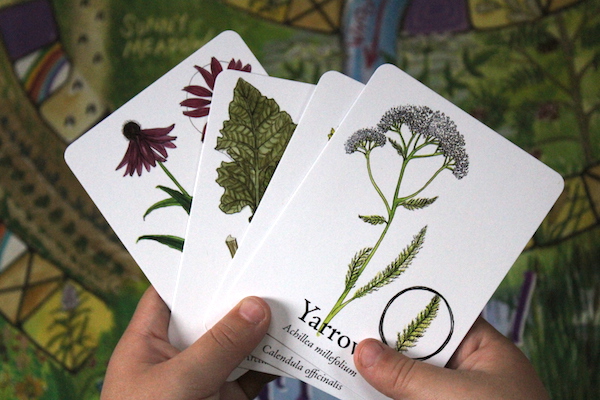
My first exposure to herbs was at the age of 13. I was a high school freshman, and I found myself sitting at a computer with the internet for the first time. The internet wasn’t exactly new, but it was new to me.
What should I do? Then I saw an ad that would change my life. It could have been an ad for anything but it was an ad for dandelion root coffee.
I spent the next hour searching the internet learning about all the wonderful uses for dandelion, and once I’d gone down that proverbial rabbit hole there was no looking back.
I became incredibly passionate about herbal medicine and wild foraged plants. By graduation, herbs were so much a part of my life that I included my herbal writings and research as part of my college application. I credit them with helping to get me a full ride to an Ivy League college (that my parents definitely couldn’t afford).
For me, finding herbs was a complete matter of chance. For my children, on the other hand, exploring herbs is just part of their everyday life.
Herbs are tangible and easy to understand, even for the smallest of children. Their young brains are wired for learning and pattern recognition, and the same openness that allows a toddler to learn language also allows them to recognize patterns in the natural landscape.
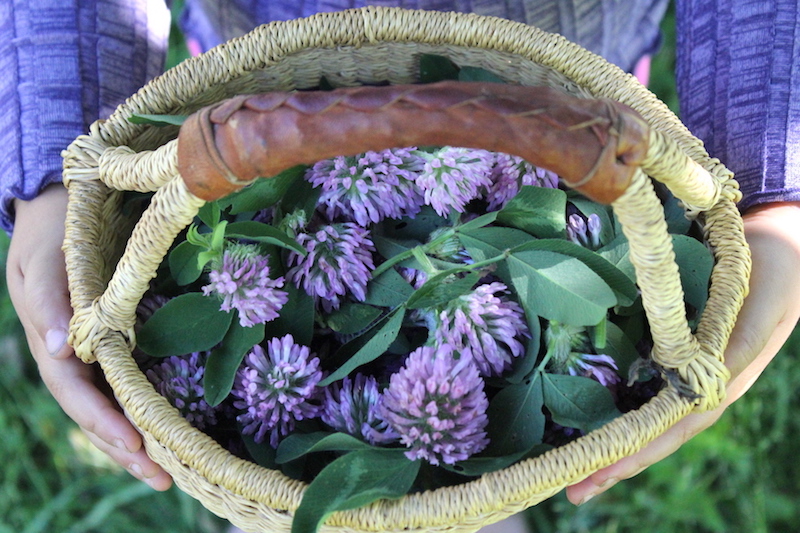
Begin with Edible Flowers
The bright colors and enticing smells of flowers capture the attention of young and old. My daughter had just turned two, but one of the few phrases she knew well was, “Eating flower mama?” She’d point at a blossom and ask if that one was safe to eat, and more often than not in our yard, the answer was yes.
Unlike some wild edibles which can be harsh or bitter, edible flowers are mostly sweet and mild. Incorporating edible flowers into our walks became a daily routine. Once something’s part of your routine it becomes part of your world in a very tangible way.
Add in a tiny dose of habit, and little ones can learn to associate plants with feeling better and finding happiness. My little ones enjoy combing the grass for tasty clover flowers, and they already know to ask for a soothing cup of chamomile tea when they’re upset or scared.
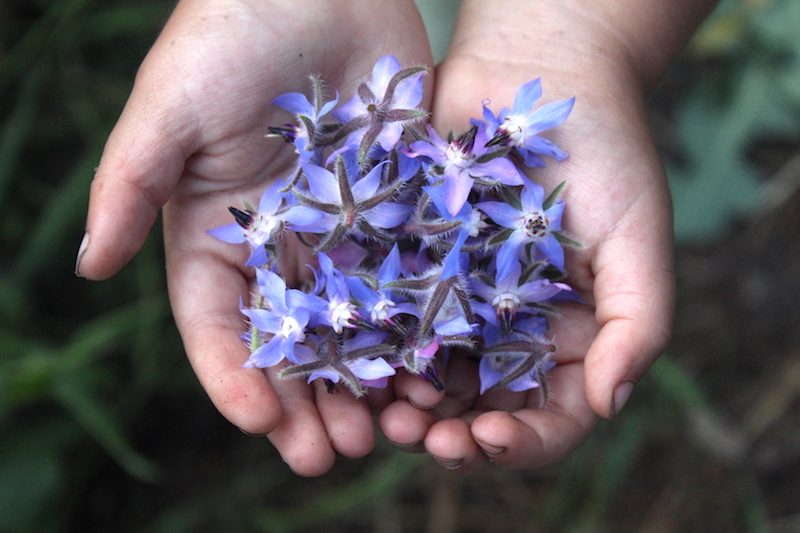
Work with What You Have
Talking about exotic herbs from far away places might work for some kids, but I’d imagine the plants growing right in your own backyard or park would resonate better with most. Work on identifying the plants and weeds growing right in your own yard, and you’ll be surprised to find that many of them are in fact medicinal. Many common landscape trees are medicinal, along with plenty of the common perennials in grandma’s flower garden.
The linden trees growing in our yard bring a particular source of joy to my little ones. They pick the flowers for a child-friendly calming linden herbal tea, and the leaves are some of the sweetest salad greens you’ve ever tasted.
Once a child knows that there’s medicine all around them, the whole topic seems more real and much more accessible.
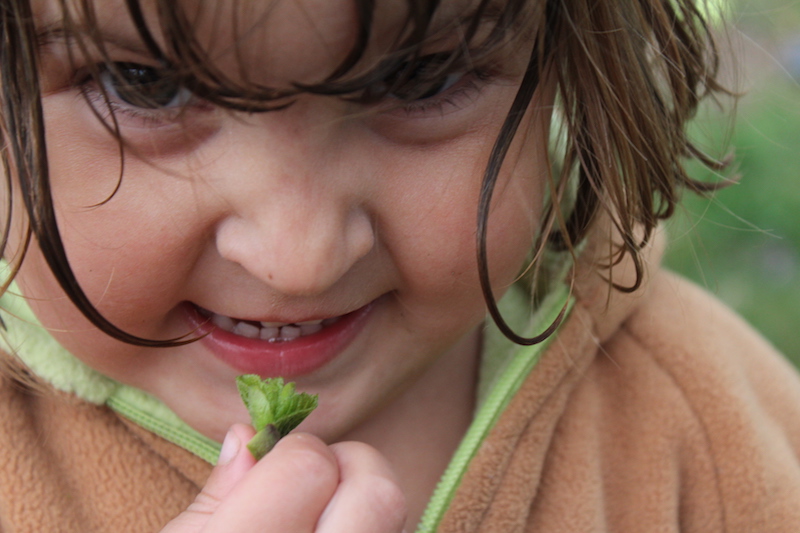
Start a Herb Garden
Gardening is a great way to get kids outside and engaged. It can be tricky to know when they’re ready, but it’s likely earlier than you think. Both of our little ones already help out in the garden, and sometimes it goes better than others.
My first attempt to plant a herb garden with a 2 1/2 year could have gone better. I got all set up on the plot with a basket of seeds and left her for about 2 minutes because I forgot a trowel.
I came back and she proudly announced that she’d planted all the seeds! Every single packet was empty.
She had dug a single hole, about 4 inches deep, and entombed a dozen full seed packets deep within the earth. I did manage to dig them up, and we scattered the seeds over the whole bed and hoped for the best.
Many of them did grow, but as you can imagine it wasn’t exactly an orderly herb garden. That’s to be expected.
Know that gardening with kids means letting go of straight rows and perfect plants. It’s all part of the journey.
Starting early did have its advantages, and the next summer at 3 1/2 she knew just how to plant and tend the plants. I was amazed that she remembered which were the herbs and which were the weeds, even after one of our long northern winters.
Regardless of the child’s age, the first year may be tricky, but stick with it, they’re learning more than you think.
Incorporate Herbs Into Meals & Treats
Food is medicine, and even the basil in your pasta sauce has medicinal elements. Try making a few deliberate herbal choices in your cooking, ideally working directly from your backyard herb garden. When a child has the option to participate in every part of the process from seed to plate, there’s greater opportunity for connection.
Don’t just limit it to standard culinary herbs you can pick up at the grocery store. It’s a little more exciting if it’s something exotic, that puts their basic herbal education to work. Try some homemade dandelion ice cream, whip up a batch of burdock peanut butter cookies or lavender honey cookies.
Tulsi, or holy basil, can be used as a seasoning, in much the same way that regular basil is used. Bee balm has dozens of uses, as a seasoning or in baked goods. When you get creative, you create lasting memories for your little ones.
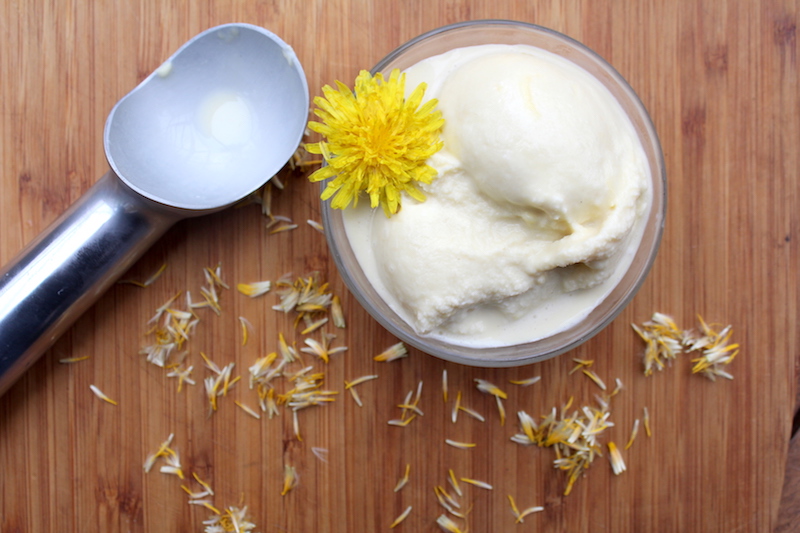
Choose a Herbal Ally
Help your child pick a herb for an in-depth focus lasting a few weeks or a few months. This will allow you to really focus on one plant in particular, and all the ways you can work with it.
Here’s what Mountain Rose Herbs suggests: “Once your kids get more familiar with herbs, encourage them to pick one herb to learn about for 3 – 6 months to a year depending on their age. Have them focus on one herb and use it as much as possible, making as many recipes as possible from it and really getting to know it. Encourage them to be immersed in the plant, writing songs, stories, and poems about their ally. They should also be making as many healthful products as possible with their herbal ally: salves, tinctures, vinegars, elixirs, oils, poultices, compresses and so on. Even if it doesn’t seem to make sense doing this with a plant, have them try it anyway, even if it’s just a few ounces.”
While walking around sampling different herbs in the wild landscape gives children breadth, that approach doesn’t go deeply into any particular plant. Both approaches have their place, but a deep dive on occasion can really help children to understand a plant and the possibilities.
Herbal Coloring Books
Some kids are more focused on coloring and art than others, so you’ll need to use your judgment as to whether or not using coloring books as a teaching tool is a good fit. My daughter is more gregarious, and would rather be digging in the garden than coloring.
My son is much more meticulous, and coloring books are just his speed. Regardless, here are a few options to check out:
- Medicinal Plants Coloring Book: A Herb Guide
- Medicinal Plants Coloring Book
- Herbs Coloring Book
- Common Weeds Coloring Book
- The Botany Coloring Book
Herbal Games and Stories
Until now, my children’s herbal education has been immersive. Now that they’re two and four, I’m beginning to add a tiny bit of structure into their learning.
I’ve found a number of wonderful resources for teaching children about herbs, even for children as young as mine. At this age, games and stories are the perfect jumping off point.
My daughter loves the board game Wildcraft, which is rated for ages 4+. Gameplay is relatively simple, but the cooperation elements mean that the game can grow as your children grow older. I would imagine she’ll enjoy this game into her early teens.
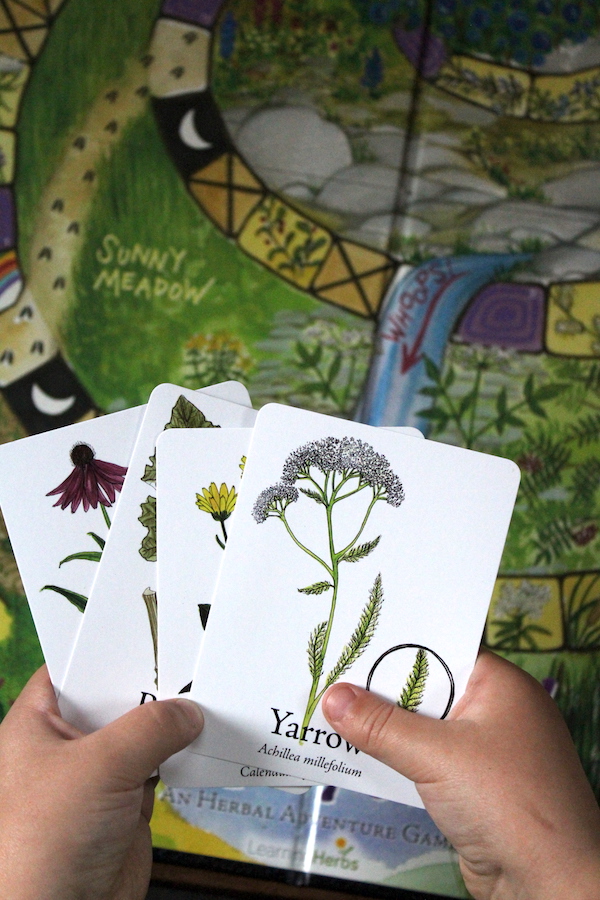
There’s also a book Herb Fairies book series, by the same person that created the wildcraft board game. They’re children’s books that teach about herbs through the context of an adventure with mythical herb fairies. I think my little ones will enjoy these when they’re just slightly older, perhaps 5 or 6.
Create a Children’s Herbal Library
This mama has her own herbal library filled with all manner of herbal books, from old herbal manuscripts to modern books full of peer-reviewed studies. Very few of them are written in a way that will hold the attention of a child, at least until they reach high school age. Giving children their own resources helps them feel empowered to chart their own learning path.
- Walking in A World of Wonder: A Children’s Herbal ~ Specifically designed as a resource for kids 5 to 10.
- A Kids Herb Book for Children of All Ages – This is more or less a herbal activity book that includes recipes for making basic child-friendly herbal preparations, as well as herbal activities and games.
- Botany in a Day – A great resource for parent and child alike that covers the basic anatomy of plants.
- Foraging With Kids – Covers the identification and uses of 52 wild edibles that are easy for little ones to identify and enjoy.
Children’s Herbal Courses & Magazines
Actual herbal courses may be too much for young kids, but in my high school years I would have loved the opportunity to take any of the herbalist courses from the Herbal Academy. They cite credible academic papers, but then boil the information down into very digestible lesson plans with vivid pictures that really bring the study material to life.
For younger kids, they also have a totally free short course called An Introduction to Herbs for Kids which takes you through 8 mini-lessons. It’s written specifically for school-aged kids, and it includes printable flash cards and activities to keep them engaged through every step of the process.
There’s also a magazine specifically written for children called Herbal Roots. It’s full of child-friendly activities, crafts and recipes focusing on one herb each week delivered via PDF.
Beyond things focused directly towards children, look for free adult resources to try. You might be surprised that many adult guides are illustrated to speak to the child in each of us, and most are written at around a 6th grade reading level anyway. Here’s a list of 25 free Herbal Resources, and at that price, what have you got to lose?
Other Ideas?
Our herbal journey is just beginning, and I’m enjoying watching the wonder in my children’s eyes as they discover new plants. I would love to hear what’s worked for you and your family. Leave a note in the comments below.
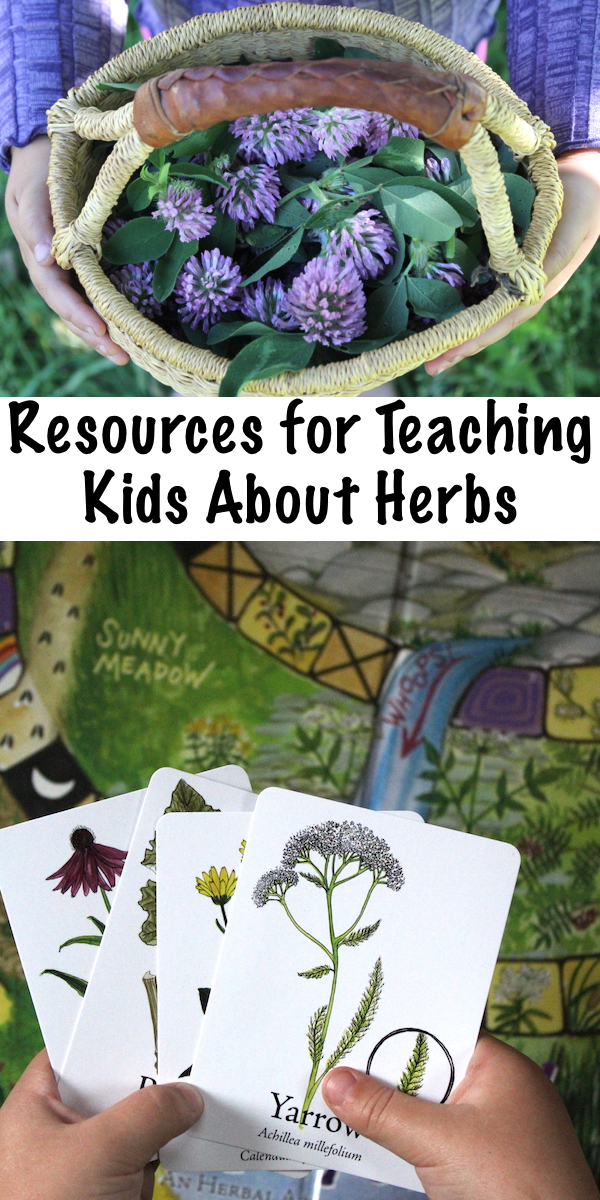


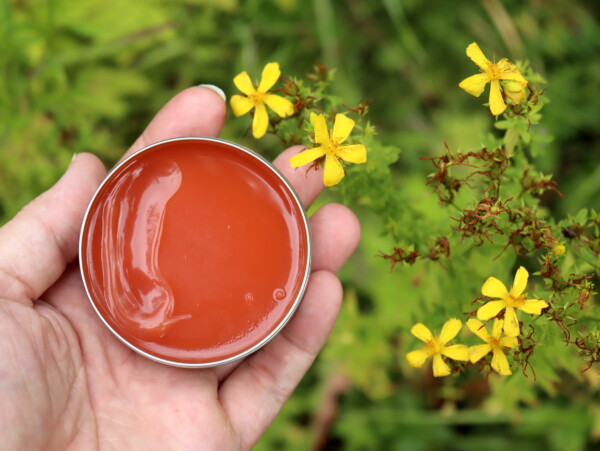
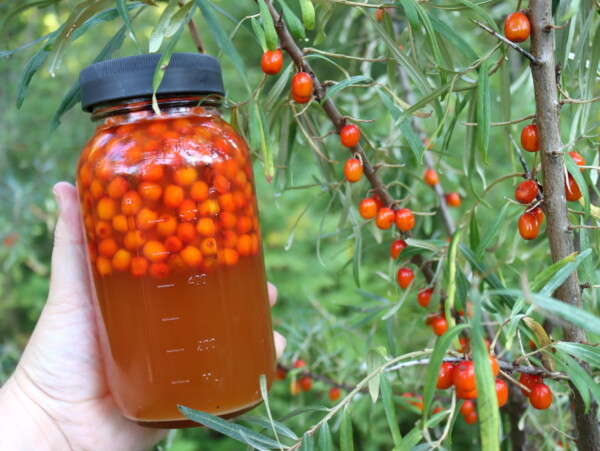
My little one (3yo) comes to me with her foraged finds and asks, “Num, num mommy?” If I say yes, she will try it. Some of her favorites are violet flowers. I was weeding out buttercups from the strawberries and she was proudly identifying the different leaves of the two plants (which are pretty similar). She also loves playing Wildcraft with her big siblings. There is a free PDF ebook of all the plants in the game. It has the beautiful illustrations from the game with more specific information about each plant.
That’s wonderful. Thanks so much for sharing.
“Teaching kids about herbs is a fantastic way to foster a connection with nature from a young age. 🌿🌼 It’s so heartwarming to see them embrace the beauty and benefits of these plants. Kids’ herbal garden adventures are the best! 😄 #HerbalEducation”
Where can I get those flashcards that are in the picture?
Those come with the Wildcraft board game that is linked in the post.
Hi Ashley,
Love your blog.
I found more resources for homeschooling my boys in this post.
I did notice that you did not list our most favorite children’s herb book, though, and I wanted to tell you about it…it’s called Herbal Adventures by Rachel Jepson Wolf. It came out in 2018, I think.
Wonderful, I’ll check it out!
You have helped open a door for me that I’ve waited to be opened for years! Sounds so dramatic, but I have been trying to get into herbalism and now I have resources, not only for myself but also to start teaching my 18month old. Your resources are amazing. So glad I stumbled on this pin! 😁
Wonderful, so glad it helped =)
Where could I get a set of the identifying cards like the child is holding in their hands?
These are part of the wildcraft game I talk about in the article.
I am an old man and I love you so much, what a fine Mom you are! The pic of your daughter’s hands is wonderful, wrinkled from the moisture in the soil, dirt under her nails, she must be smiling broadly. You’re approach to education is masterful. What a world we could have with more like you!
Awww, thank you so much =)